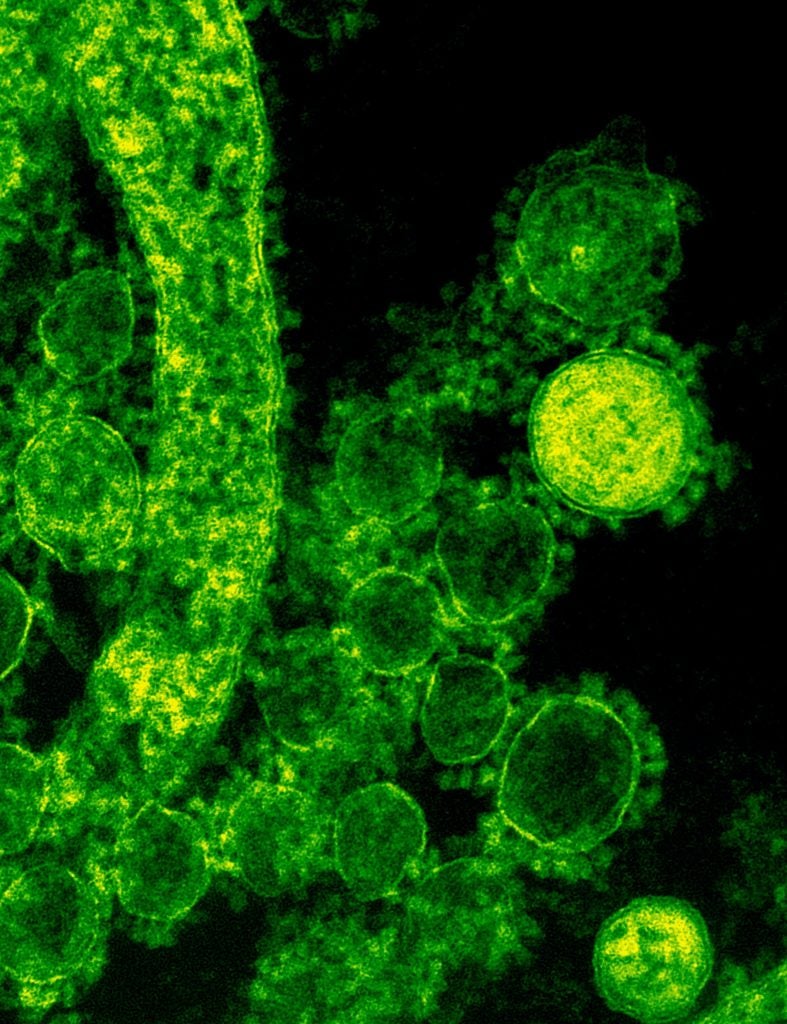
It is entirely possible for a pregnant individual to contract a sexually transmitted infection (STI) during, or prior to, pregnancy. This can cause problems for the individual by affecting their fertility and pregnancy. STIs can be transmitted to the developing fetus and potentially cause damage, which can range from physical or mental abnormalities to loss of the baby. Not all infections are spread the same way: they can be transmitted through the placenta, during the birthing process, or via direct contact with fluids; for example, during breastfeeding. Once pregnancy has been confirmed it is important to get tested for STIs; many STIs are asymptomatic, so people may be unaware that they are infected. STIs fall into two categories: bacterial (which are curable) and viral (which are incurable). Both classes of STIs pose different threats to both the pregnant individual and fetus, which makes getting tested regularly that much more important.
Table of Contents
Bacterial Infections
Bacterial infections are less threatening to the pregnant individual as these STIs can be cured with the proper antibiotics. If these infections are caught soon enough it can be possible for the pregnant individual to get treated before the infection reaches the fetus. Although these infections are less threatening to the pregnant individual since they are treatable, there are still very serious complications that can arise from contracting these STIs. It is important that prescribed antibiotics be taken for the full course of treatment—even if symptoms seem to disappear—as the bacterial infection is not truly gone until the antibiotics are completely used as prescribed. Not all STI medications are safe to take during pregnancy, so a doctor should be consulted.
Chlamydia
Chlamydia can affect fetal development and fertility differently depending on when the infection was contracted. Since chlamydia is often asymptomatic, it is especially important to get tested as it is often overlooked.1 Females who have chlamydia during the early stages of pregnancy run an increased risk of miscarriage or premature delivery.2 Chlamydia may be transmitted from the genitals of the pregnant individual to the newborn child as it passes through the vaginal opening during childbirth, particularly to the baby’s respiratory system and eyes. This can lead to a severe eye infection called trachoma, which may cause blindness, and requires immediate antibiotic treatment. Additionally, the baby can catch pneumonia, which is particularly dangerous for infants.2,3 It is crucial that the pregnant individual is also treated with antibiotics to rid themselves of the infection and prevent a cycle of re-infection between them and the fetus.3
Bacterial Vaginosis
Bacterial vaginosis occurs when there is an imbalance of “normal” bacteria in a female’s vagina, typically due to unsafe actions like douching and engaging in unprotected sexual activities with multiple partners. Pregnant individuals who are infected with bacterial vaginosis are at risk of giving birth to premature and underweight babies (less than 5.5 pounds). This condition can easily be treated with a series of antibiotics, however, it may return and require multiple treatments.4
Gonorrhea
Gonorrhea is another prevalent bacterial infection that can grow inside of the reproductive tract, mouth, anus, eyes, and throat. The infection can cause a fever or bloodstream infections.2,3 Like chlamydia, gonorrhea is commonly transferred to the child during the birthing process after the baby makes physical contact with the pregnant individual’s infected region. It is possible for the child to be unaffected if the pregnant individual does not have an active infection.3 A child who acquires gonorrhea may develop blindness, pink eye (conjunctivitis), and joint infections.2,3 Like chlamydia, there is an antibiotic available to give to the child after birth to treat the infection.3 Gonorrhea is often asymptomatic, which means females who are pregnant or planning on becoming pregnant must take extra precautions with sexual exposure and get tested for STIs regularly.
Syphilis
Syphilis is a bacterial disease that can be transmitted from a pregnant individual to their child during and after pregnancy. Syphilis occurs in four stages: primary, secondary, latent (where it is asymptomatic), and tertiary (where it is no longer transmittable).1 The highest risk of transmission occurs during the first and second stages, so a pre-screen for syphilis is important early in pregnancy. In areas of increased prevalence for syphilis, the Center for Disease Control (CDC) recommends that a serologic test be performed twice during a pregnant individual’s final trimester.4 Children who survive the birth must be treated for syphilis immediately in order to avoid seizures, physical abnormalities in the brain, eyes, heart, ears, skin and bones, and possibly death.3 Upon diagnosis, both the pregnant individual and child should be treated with antibiotics in order to prevent further transmission.
Trichomoniasis
Trichomoniasis is a parasite that causes green vaginal discharge.1 Pregnant individuals with trichomoniasis have a higher chance of giving birth preterm. Upon diagnosis, medication should be given to both the pregnant individual and child to cure the infection.3
Viral Infections

Viral infections are incurable since viruses remain in the body once they have been transmitted. Although these viruses cannot be cured, there are treatment options for the pregnant individual and steps that can be taken to protect themselves and their developing fetus. The best course of prevention is to undergo a caesarian section (C-section) to avoid passing the virus to the baby through the birth canal.5
Hepatitis B
Hepatitis B is an infection of the liver that can be passed to the fetus through the placenta.3 The risk of transmission is higher the later the pregnant individual gets the infection during the pregnancy. There is only a 10% chance of transmission if the individual is infected early in their pregnancy, but a 90% chance of transmission if they acquire the infection later in the term.2 Pregnant individuals with hepatitis B have an increased risk of premature delivery and can transmit the infection to their baby.3 Fortunately, the development of new vaccines (for both adults and young children) has been successful in helping to prevent transmission of Hepatitis B, such as giving newborns of infected individuals the hyperimmune globulin immediately after birth.2
Herpes
Herpes is a viral infection that presents itself as sores on the affected areas. Transmission mainly occurs through physical contact with the sores or their fluids.1 As a result, fetuses tend to be relatively safe because they cannot touch any of the sores until the birthing process. However, the later in pregnancy an individual contracts the infection, the higher the chance of infecting the fetus. The transmission of this disease can lead to brain damage, blindness, and even death in infants.2 In order to prevent the herpes virus from spreading to the infant, the pregnant individual can take anti-viral pills and the doctor can perform a cesarean section.3 If the individual has a history of herpes, there are medications to take to reduce the chance of an outbreak, reducing the risk of transmission.2
HIV/AIDS
Human Immunodeficiency Virus (HIV), the virus which can cause Acquired Immune Deficiency Syndrome (AIDS), is especially concerning for pregnant individuals with this virus. HIV is easily passed through bodily fluids, such as blood, urine, and vaginal discharge, and is therefore transmittable during any stage of pregnancy: through the placenta, during the birthing process, and during breastfeeding.2 While HIV is a serious concern, there are medications and precautions that make the transmission of the virus almost entirely preventable.3
Human Papillomavirus
Human papillomavirus (HPV), which carries genital warts, is a common sexually transmitted infection, where transmission of the virus is most likely during childbirth. The presence of genital warts highly increases the risk of HPV transmission, so some pregnant individuals decide to undergo a C-section if there are active breakouts in the vaginal canal. Treatment of the pregnant individual’s warts is typically delayed until after the child is born due to the medication used.3
Can I Breastfeed with an STI?

Because STIs can be transmitted through bodily fluids, it is possible that breastfeeding can pass these infections to a baby. Some STIs can easily be transmitted through breastmilk, others not at all, and some only transmit conditionally. These are general guidelines to follow, so pregnant individuals should check with a doctor to see if their condition and medication can truly prevent transmission to their baby.
Easily Transmittable
HIV is easily passed through breastmilk and therefore breastfeeding while diagnosed with HIV/AIDS will likely result in the transmission of the infection. We recommend that HIV positive parents use a breastmilk substitute instead of breastfeeding in order to reduce the risk of transmission.5
Conditionally Transmittable
Trichomoniasis can be transmitted if the pregnant individual is not taking their antibiotics correctly, (or at all). Metronidazole has been found to effectively stop transmission of trichomoniasis if breastfeeding takes place 12 to 24 hours after taking the medication. Syphilis and herpes can be transmitted only if the breast pump, milk, or if the baby comes in contact with an infected sore. These sores can appear on the nipple and areola, so take precautions if breastfeeding with these STIs.5
Not Transmittable
Chlamydia and gonorrhea are not transmittable through breastfeeding so a breastfeeding individual can safely breastfeed with these infections. HPV very rarely transmits to a baby, so it is almost always safe for an individual to breastfeed with HPV, but it does carry a low risk of transmission.5
Concluding Remarks
STIs can pose threats to a pregnant female and their developing fetus, regardless of when the infection was contracted. Bacterial STIs are typically curable, while viral ones are controllable. Not all STIs are transmitted to the fetus the same way or with the same risk, but getting regularly tested for STIs is still important. Early treatment of STIs can reduce the risks for both the pregnant individual and the fetus, so practice safe sex and be as vigilant as possible when it comes to prenatal care.
References
- Baldwin, Janice, Baldwin, John, and LeVay, Simone. Discovering Human Sexuality. Sunderland: Sinauer Associates, Inc., 2018. Print.
- “How Do Sexually Transmitted Diseases and Sexually Transmitted Infections (STDs/STIs) Affect Pregnancy?” Eunice Kennedy Shriver National Institute of Child Health and Human Development, U.S. Department of Health and Human Services. Date Accessed: 12 Nov. 2018
- “Sexually Transmitted Diseases (STDs) & Pregnancy.” Cleveland Clinic. Date Accessed: 12 Nov. 2018
- “Sexually Transmitted Diseases (STDs).” Centers for Disease Control and Prevention, Centers for Disease Control and Prevention, 5 Oct. 2018. Date Accessed: 12 Nov. 2018
- “STIs, Pregnancy, and Breastfeeding.” Womenshealth.gov, 30 Aug. 2018. Date Accessed: 12 Nov. 2018
Last Updated: 28 November 2018.
